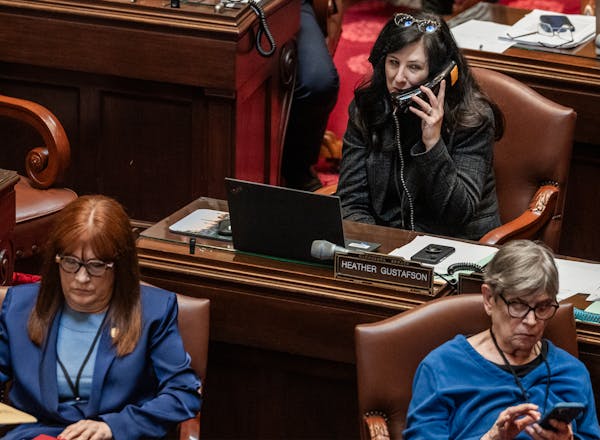If you're ever in Dubai, United Arab Emirates, and you want to know how one of the locals is doing, just say "Keef haluk?" In Monrovia, Liberia, you may similarly inquire "How da' body?"
Or you could just ask any of the 1,000 students at Stillwater Junior High School if they remember the greetings and salutations they learned this week at World Cultures Day, which brought 45 speakers representing 18 countries to one of the least diverse public school districts in the metro area.
The Minnesota International Center, together with the Stillwater district, paid for and put on the program to instill an appreciation for the diverse world the students will navigate. It's an important investment, but one the district wouldn't have been able to afford without an $8,000 grant from the Partnership Plan, the district's nonprofit education foundation.
In a time of tight budgets, schools are increasingly turning to funding from outside their normal budgeting process in order to compete for students who are seeking the best programs available. They are tapping the foundations solely dedicated to their schools, such as Stillwater's Partnership Plan, and they are seeking funds directly from federal government grants, foundations and corporations. (Most school districts in the state have their own, dedicated nonprofit foundation -- as required by state law.)
The World Cultures Day funds were used to pay for a vast network of arrangements involving 10 vans picking up and delivering speakers to the school, several PowerPoint presentations and the "Real Lives" software package that is designed to help students simulate life experiences of people across the globe.
The kids piled into the school's cavernous auditorium for a morning kickoff session and a talk on the human tragedy of Darfur; then they went to classrooms for presentations by people from different countries and got their "passports" stamped.
The funds will also pay for a similar presentation at Rutherford Elementary, also in the Stillwater district, later this year.
While event represented just a portion of the $300,000 that the Partnership Plan handed out in the past year, the amounts in Stillwater and elsewhere are increasing. Five years ago the Partnership Plan's funding was half the level it is today, according to Christine Tubbs, executive director of the nonprofit fund.
"We give them the opportunity to stretch beyond providing the required courses and curriculum," Tubbs said.
Similarly in the South Washington County school district, grant funding has gone from about $500,000 annually just three years ago, to $900,000 last year.
The Mahtomedi school district, which has 3,000 students, has garnered more than $300,000 in grants in the past 18 months to institute an engineering curriculum throughout its school system. That includes acquiring computer-aided design stations and flight simulators in its high school.
"We couldn't be doing this program without the additional funding from the grants," said Kathe Nickleby, director of engineering and assistant principal at the high school. The district's roster of contributors includes 3M Co., Medtronic Inc., H.B. Fuller Co. and Iowa State University.
Nickleby said she believes suburbs such as Mahtomedi face an obstacle in getting grants because they have a comparatively lower percentage of students who are poor. She said only about 8 percent of the district's students qualify for free and reduced lunches.
"It's really hard for us to get grants because people don't see our students as needy as in other districts," Nickleby said.
South Washington County grant coordinators say they see the same dynamic.
But not everyone agrees that it's harder for wealthier suburban schools. Said Stillwater's Tubbs: "We have as much access as we are willing to pursue."
Gregory A. Patterson • 651-298-1546

Minnesota lawmakers look to ban 'excited delirium' training for police
![A crowd gathered to watch Michelle Wie as she teed off on the 17th hole. ] ANTHONY SOUFFLE • anthony.souffle@startribune.com Golfers took part](https://arc.stimg.co/startribunemedia/BDYXT7WFC2IMZASOKMDVFM4Y5I.jpg?h=91&w=145&fit=crop&bg=999&crop=faces)
Hazeltine golf club wants to take large-scale events to the next level with villas, new courses
Defense attorneys seek to discredit key witness in Feeding Our Future meal fraud scheme

Expect clearer air this summer in Minnesota, thanks to a milder wildfire season

